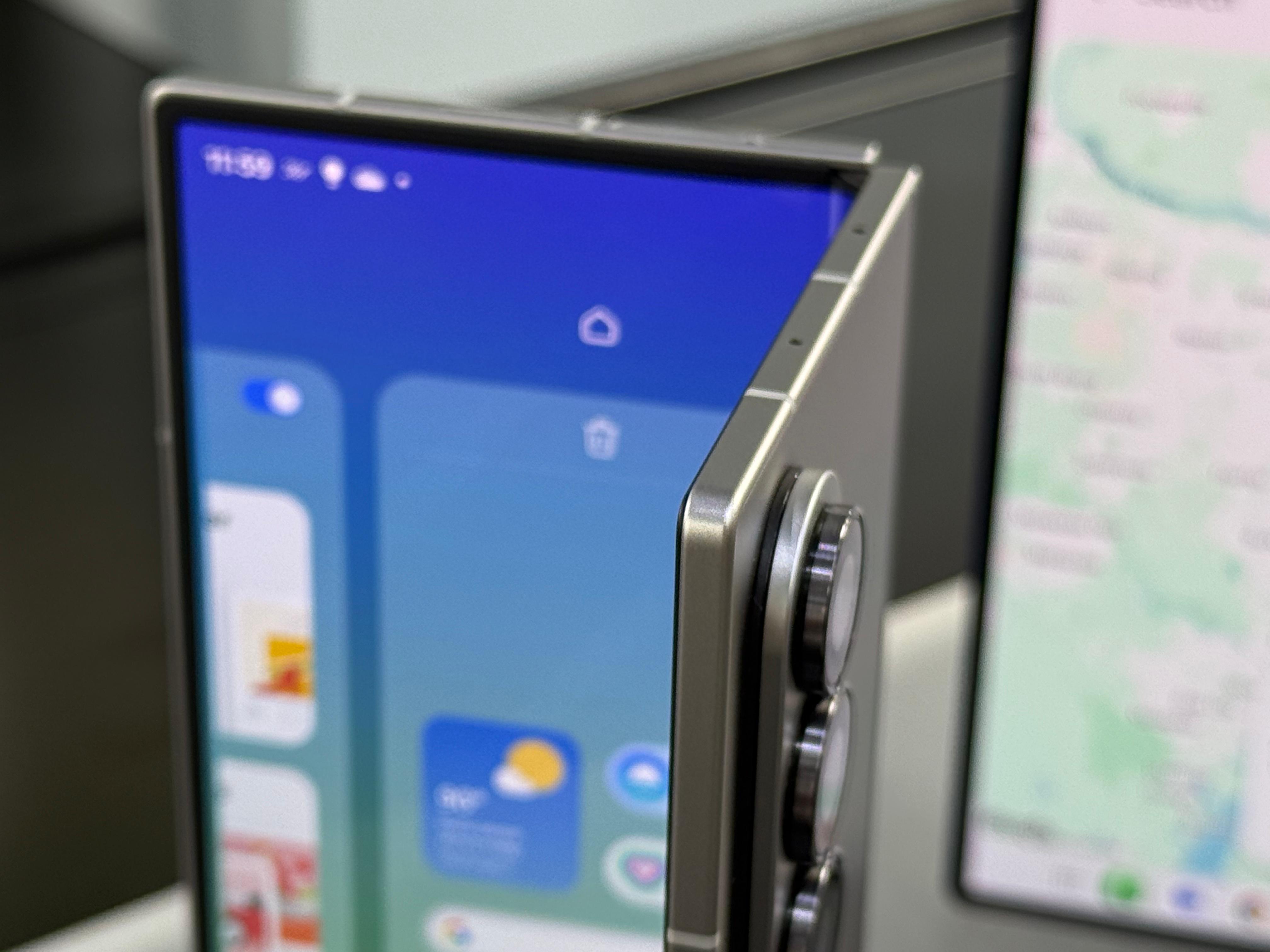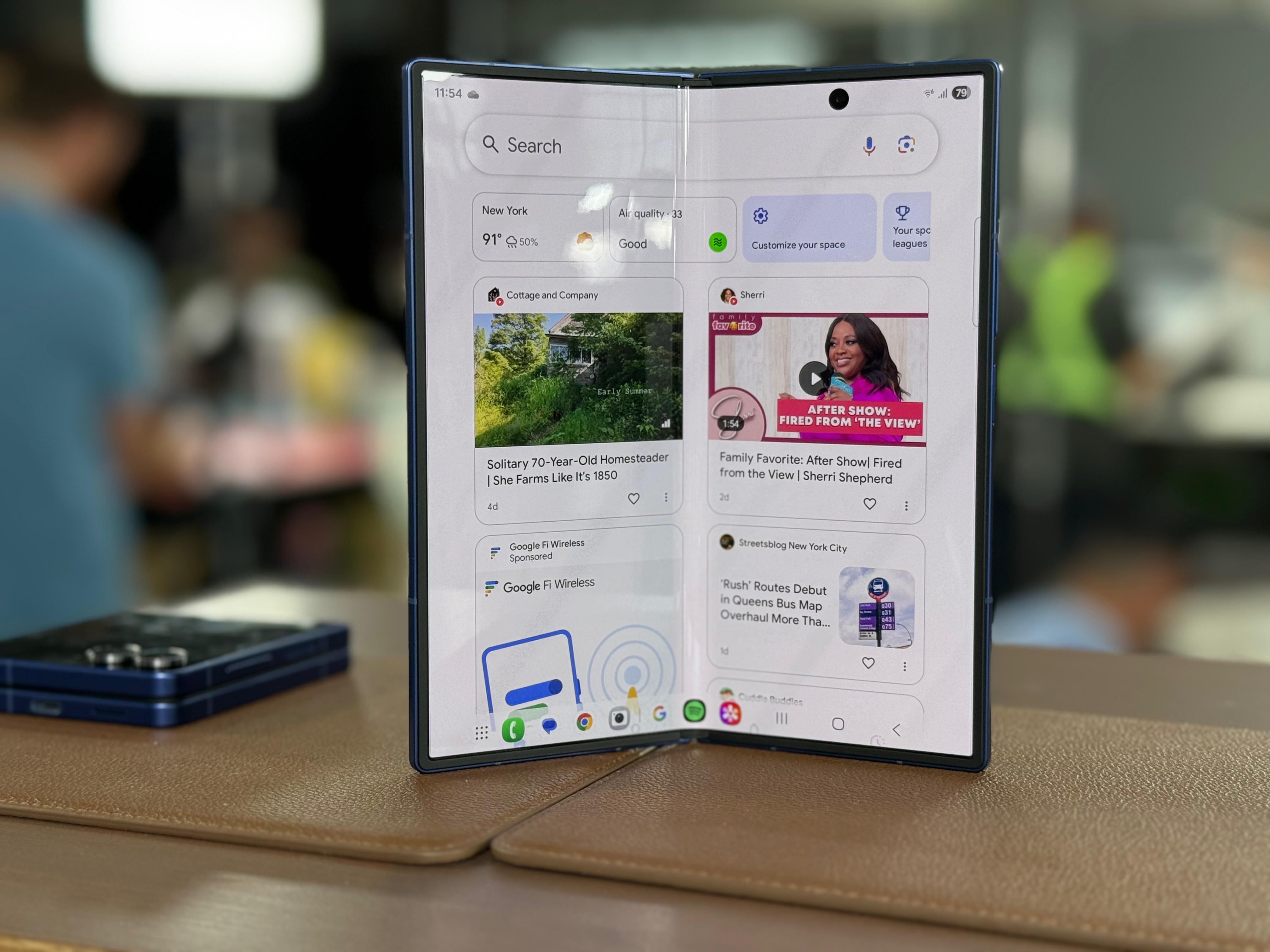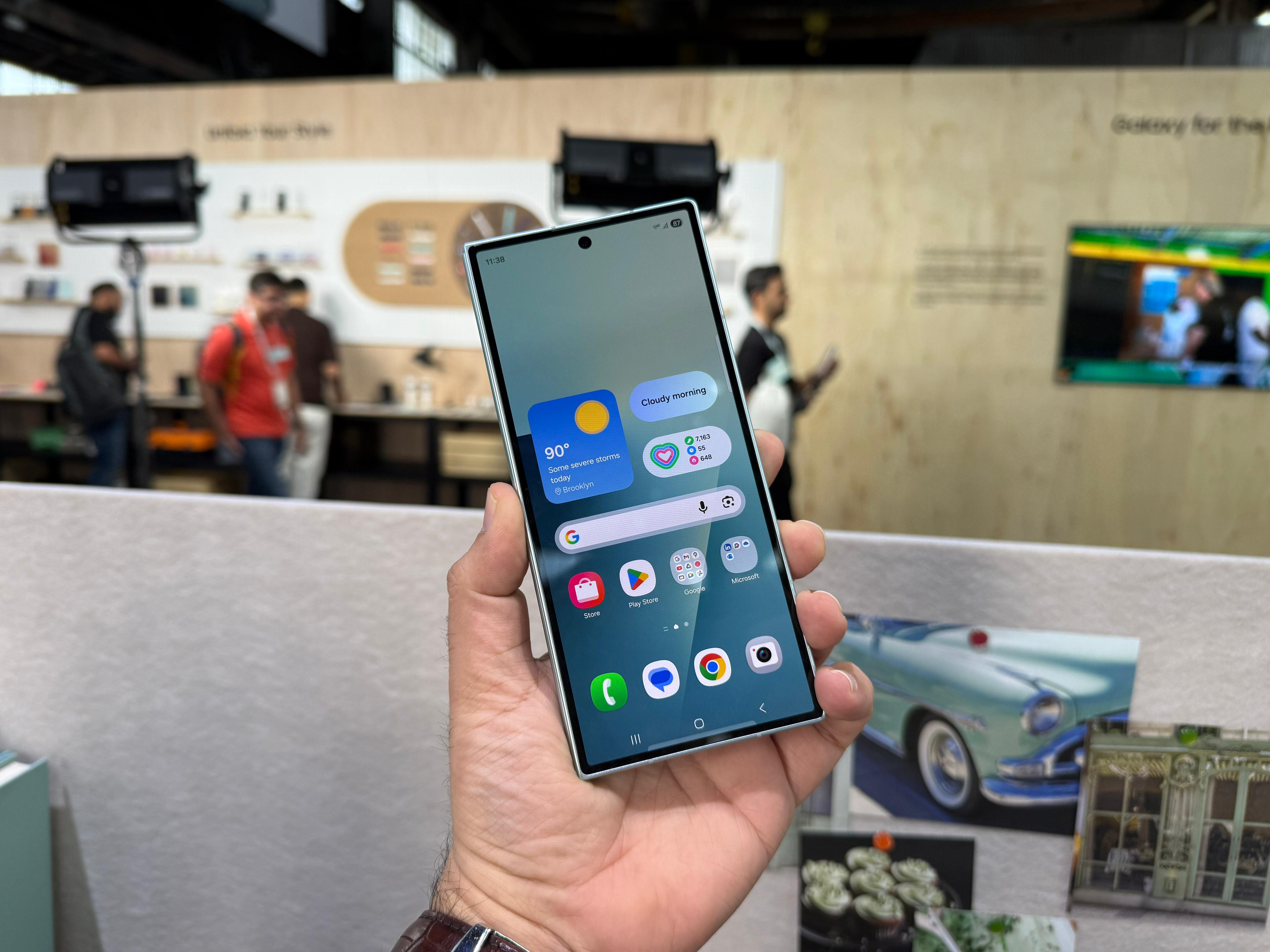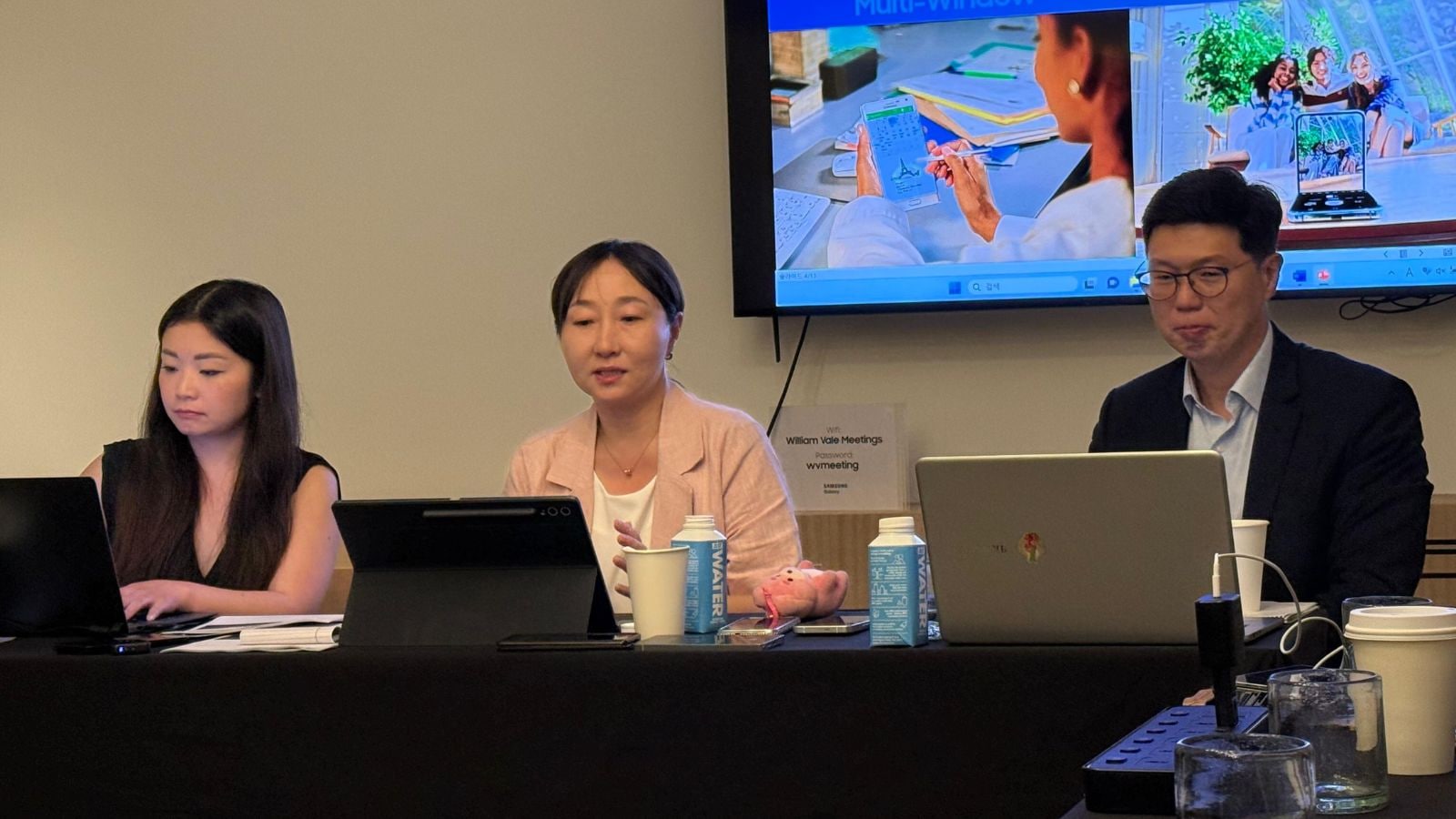When Samsung unveiled the Galaxy Z Fold 7 last week at its Unpacked event in Brooklyn, New York, what made headlines was its thin and light design, and how the company managed to deliver a bar-style smartphone with a foldable form factor.
However, a lesser-known but equally important factor that plays a critical role in differentiating a foldable phone from a traditional smartphone is the user interface.
Samsung has said its new One UI 8 is designed to be “context-aware and naturally responsive,” and has been optimised specifically for the flexible format of foldables.
While the user interface is evolving on smartphones, a consistent criticism of foldables is that the UI doesn’t look much different from what you get on regular smartphones, calling into question the differentiated experience that companies like Samsung promise as part of the foldable appeal.
Responding to this criticism, Sally Hyesoon Jeong, EVP and Head of Framework R&D, Mobile eXperience Business, Samsung, explained why the company opted for a basic app layout on foldables. However, Jeong also offered a glimpse into how the user interface might evolve in the future.
“The user interface you see on foldables is being used broadly across their larger screens. That’s the layout, and we have gone with a more basic app interface. But as AI advances and we receive more feedback from users, a voice-centric UI is something we could consider as we move forward – and this isn’t just about foldables,” said Jeong, who has been with Samsung for over 25 years.
 Samsung’s new book-style foldable phone is impressively slim, at just 4.2mm thick when open and 215 gram. (Image credit: Anuj Bhatia/The Indian Express)
Samsung’s new book-style foldable phone is impressively slim, at just 4.2mm thick when open and 215 gram. (Image credit: Anuj Bhatia/The Indian Express)
“It’s not a form factor issue. As AI continues to evolve and we move more toward this kind of voice-centric or even app-less interface, I think there’s real potential to apply that approach, whether it’s on a bar-type phone or a foldable.”
Story continues below this ad
Voice-based vs app-based interface
The user interface on devices like the Galaxy Z Fold 7 and Z Flip 7 supports a voice-based AI agent, and it is deeply integrated with Google’s Gemini Live, which has been improved with new multimodal capabilities. It can better understand what users want, see, and do, while also providing contextual answers without requiring users to switch back and forth between different apps.
In fact, Gemini Live on the new foldables also supports the Live Screensharing feature, allowing users to ask Gemini about what’s on the screen or within view of the camera, and get instant answers.
As Jeong indicated, a voice-based user interface on smartphones — instead of an app-based interface — could be a possibility in the future, but it won’t be limited to foldables alone.
 The Galaxy Z Fold 7 will be running the latest One UI 8 (and Android 16) right out of the box when they ship on July 25. (Image credit: Anuj Bhatia/The Indian Express)
The Galaxy Z Fold 7 will be running the latest One UI 8 (and Android 16) right out of the box when they ship on July 25. (Image credit: Anuj Bhatia/The Indian Express)
Samsung pioneered foldables with the launch of its first foldable phone in 2019. Since then, it has released multiple generations of foldable devices in two form factors: Flip and Fold. The Flip is more akin to a traditional smartphone, where a single screen folds in half, whereas the Fold opens like a book to reveal a larger, tablet-like display.
Story continues below this ad
Weighing in on software and hardware
Companies like Samsung have a long-term product roadmap, and often work on multiple generations of devices simultaneously. This means Samsung has to take a differentiated approach when developing software and hardware, where, at times, development happens in parallel, and at other times, the software is developed independently when the hardware dependency is not there.
“In cases where there’s some hardware dependency, we have to build the software experience together. For instance, in a large-screen environment, we continuously develop and prototype software specifically for that use case. But when there’s no hardware dependency, we develop the software independently. For example, we try to identify consumer pain points or areas for improvement,” Jeong said.
“We also conduct our own AI development, researching and evaluating what kinds of features to introduce. That kind of independent software development can take place without relying on hardware.”
One UI 8, which is built on top of Android 16, isn’t designed solely for foldable, and also runs on standard bar-type phones as well as tablets. Samsung says that with One UI 8, the emphasis was on making large-screen multitasking possible and optimising AI for larger screens.
Story continues below this ad
 AI is front and center, as part of OneUI 8. (Image credit: Anuj Bhatia/The Indian Express)
AI is front and center, as part of OneUI 8. (Image credit: Anuj Bhatia/The Indian Express)
For instance, Samsung offers a feature called AI Results View that displays AI-generated results in a split view or floating window. This means Samsung had to maximise the amount of space used while multitasking. Another feature, called Drag & Drop, lets users move AI-generated content between app windows by simply pressing, holding, and dragging it to the relevant screen. This way, you can save time transferring content from one app to another.
Working across devices
One wonders if Samsung also draws insights from how multitasking features are received on tablets, and then brings them to devices like the Galaxy Z Fold 7, which now features an expansive 8-inch screen.
“When we developed and designed One UI 8, we looked at bar-type phones, foldables, and tablets together, and considered how to implement features across each form factor. We developed them as a unified experience – starting with a feature for a bar-type phone, then adapting it for foldables to ensure continuity, and finally considering how to express it on tablets,” said Jeong.
“We design all of this together. For large-screen applications, features like multi-window, pop-up windows, and desktop modes will be available. For example, tablets have a bigger lock screen, so we considered how to display widgets there – whether to include them or not. This whole process is done together. When designing for a particular form factor, especially those with larger screens, we think about how to apply and adapt each feature,” she added.

